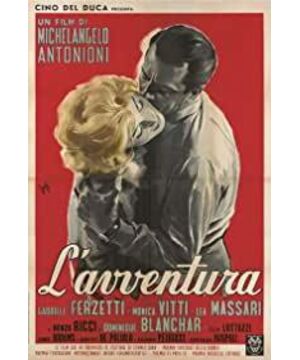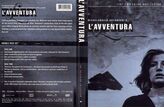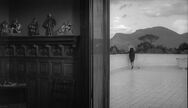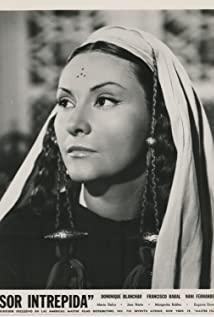1. Early life
Michelangelo Antonioni was born in Ferrara, a historic city in Emilia-Romagna, northern Italy. In 1935, after obtaining a degree in economics from the University of Bologna, he started writing for the local newspaper "Il Corriere Padano" in Ferrara, becoming a film journalist.
In 1940 Antonioni moved to Rome to work for the magazine Cinema. The magazine is the official fascist film journal, edited by Benito Mussolini's son Vittorio. Antonioni was fired a few months later. He then went to the Centro Sperimentale di Cinematografia in Rome to study film technology.
2. The first film
In 1942, he collaborated with Roberto Rossellini to write the script for "Un pilota ritorna" and also in Enrico Fulchignoni's film "I due Foscari" as assistant director. In 1943, Antonioni went to France to assist Marcel Carnet in the filming of Les Visiteurs du soir (Les Visiteurs du soir, also translated as "Night Visitors" or "Night Visitors"). Antonioni started making short films in the 1940s, Gente del Po (Gente del Po), about poor fishermen on the Po (Antonioni worked on the Po from 1943 to 1947). The short films are in the style of Neorealism, featuring semi-documentary studies of the lives of local residents.
However, Antonioni's first feature film "Cronaca di un amore" (also translated as "Love Record", "Love Story", "Love Story", "Love Chronicle" or "Some Kind of Love") Records, 1950) escaped Neorealism by depicting the middle class. He went on to create a series of films: The Loser (I Vinti, 1953), a series of juvenile delinquency stories in different countries (France, Italy and England); La Traviata without a Camellia (La Traviata Signora senza camelie, 1953) describes a young movie star and her downfall; and The Girlfriend (Le Amiche, 1955) describes middle-class women in Turin. Il Grido (1957) returns to the working-class story of a factory worker and his daughter. Every story is related to aliensocialation.
3. International Famous
In the film "Le Amiche", Antonioni experimented with an original new style: he abandoned traditional narrative techniques in favor of a series of seemingly unrelated events, and used a lot of long shoot.
Such a slow-paced style can be frustrating and unmotivated. However, Antonioni's return to this style in L'Avventura (1960) also made him internationally known for the first time. Although the film received mixed reviews at the Cannes Film Festival, the film was a sizable hit in art-house cinemas around the world. In 1962, the British "Sight & Sound" magazine listed "Affair" as the second best film of all time.
Antonioni went on to make La Notte (1961) and L'Eclisse (1962). Because the three films are similar in style and discuss the alienation of human beings in the modern world, they are often collectively referred to as the "Alienation (Love) Trilogy". It depicts that modern people are depressed and lonely due to lack of effective communication, and turn to seek love to susten their souls. But often there is no consolation, instead, love is frustrated again due to the invisible wall of separation, falling into despair and deeper loneliness.
His first color film, Il Deserto rosso (1964), dealt with similar issues, so it is sometimes considered the fourth film.
4. English-language films
Antonioni went on to sign producer Carlo Ponti, allowing the next three films to be released by MGM in English pronunciation. First of all, the British film "Blowup" (also translated as "Zoom", 1966), caused unprecedented success. While it tackles the challenging subject of "impossibility by objective standards," the film has been a huge success and a hit, and of course the film's overtly direct sex scenes also helped at the box office. The film is starring David Hemmings and Vanessa Redgrave.
In his second English-language film, Zabriskie Point (1970), Antonioni set the setting in the United States for the first time. . Although the film's soundtrack included popular artists at the time such as Pink Floyd (who wrote new songs for the film), the Grateful Dead, and the Rolling Stones, it was not as popular as its predecessor. The film depicts a counterculture movement, but has been heavily criticized for the monotonous performances of rookie actors.
The third English-language film, "Professione: reporter" (1975), starring Jack Nicholson, was praised by critics, but was still weak at the box office . The film was not released on the market for many years, but was re-screened in select theaters in October 2005 and was subsequently released on DVD.
5. "China" Incident
In 1972, between "Infinite Spring on the Dangerous Peak" and "Passing the Guest", Antonioni was invited by the government of the People's Republic of China to visit China after the end of the Cultural Revolution. He made the documentary "China" (Chung Kuo - Cina), but the film was severely condemned by the Chinese authorities on the grounds of being "anti-China" and "anti-Communist". The documentary's first screening in China was on November 25, 2004 in Beijing, at a film festival organized by the Beijing Film Academy to commemorate Antonioni's contributions.
6. Later works
In 1980, Antonioni made "Il Mistero di Oberwald's Secret" (Il Mistero di Oberwald). field format), and then converted to film, which is different from the general method of shooting directly with film negatives. This is also the first time a feature film was shot with a video camera, which can be said to be the pioneer of digital cinema. The film, starring Antonioni's frequent collaborator Monica Vitti, is based on Jean Cocteau's story "The Death of the Two-Headed Eagle" (L'aigle à deux têtes). ) (Jean Cocteau in the 1948 film "The Death of the Two-Headed Eagle").
The film Identificazione di una donna (Identificazione di una donna, 1982) was shot in Italy and the subject again addressed the same issues of the trilogy series.
In 1985, Antonioni suffered a stroke that left him half-paralyzed and unable to speak. However, he continued to make films, including Days on the Clouds (Al di là delle nuvole, 1995) with Wim Wenders, which included Four of his short stories were adapted for the screen. Wen. Wenders served as alternate director, and is responsible for the filming of four of the film's bridges. The film won the FIPRESCI Prize at the Venice Film Festival alongside Cyclo.
In the same year, he received the American Academy Award for Lifetime Achievement. It was presented to him by Jack Nicholson. Months later, the golden figure was stolen by burglars and later repaid. Before that, he was nominated for Best Director and Best Screenplay at the Academy Awards.
Antonioni's last film, made in his 90s, was Il filo pericoloso delle cose (Il filo pericoloso delle cose), part of the anthology film Eros (2004). ). The original motivation for making the film was to pay homage to Antonioni, and ultimately consisted of three short films; one each from directors Wong Kar-wai and Steven Soderbergh, who openly expressed Antonioni's influence, plus Antonioni's own footnotes . This collection of short films is framed by a number of hazy compositions and the song "Michelangelo Antonioni" composed and sung by Caetano Veloso.
The film's US DVD release included another of Antonioni's 2004 shorts, "Lo Sguardo di Michelangelo" (Lo Sguardo di Michelangelo).
Antonioni died in Rome on July 30, 2007, at the age of 94, the same day that another great film director, Ingmar Bergman, passed away. Antonioni's body is currently placed in the city hall of Rome until his funeral on August 2, 2007. The city government also set up a large screen in the mourning hall to present Antonioni's black and white continuous images, including the background and background of the film.
7. Form and style
Film historian Virginia Wright Wexman describes Antonioni's view of the world as a "postreligious Marxist and existential intellectual" approach. [10] Antonioni speaks in a speech at Cannes about Affair (L'Avventura, 1960). He said that in this modern age of reason and science, human beings have always survived through "a harsh and rigid morality that is considered and assumed to be cowardly and utterly lazy." He said that movies can see contradictions - we look at those moral views very carefully, we study and analyze them to the point of exhaustion. We have the ability to do it, but we don't have the ability to discover new ways. [11] Nine years later, he expressed the same opinion in an interview. He said that he hated the word morality: when people become comfortable with nature, when spiritual space becomes his real background, these words and views (referring to morality) will lose their meaning, and we will no longer need to use them.
Thus, one of the recurring themes of Antonioni's films is that the protagonists who endure ennui live empty and aimless lives other than the satisfaction of sensual pleasures or the pursuit of material wealth. The film historian David Bordwell writes that in Antonioni's films, vacations, parties, and artistic pursuits cannot hide the lack of purpose and emotion of the protagonist. Sex is casual temptation, and the protagonist pursues wealth at any cost.
Antonioni's films tend to omit plot and dialogue, and spend most of their time wandering about certain situations, such as the ten-minute long shots in "Professione: reporter" (1975), or in "Sea of Desires". In L'Eclisse (1962), Monica Vitti stares curiously at an electronic signboard, accompanied by ambient sounds and circuit clangs. Virginia Wright Wexman explains his style this way:
"...the camera is placed in the mid-range far more than the writing, with frequent slow movements, and the lens allows for extended continuity by editing. Each frame will then be more complex than the kind that would normally be framed in smaller environments. Style, can carry more information...In Antonioni's work we have to know his picture in detail, he forces all our attention through the continuous shot until the shot is cut..."
Antonioni also Notable for developing color as an important expressive element in his film style, especially in his first color film, Il Deserto rosso (1964).
8. Importance
David Bordwell considers Antonioni's films to be a huge influence on art cinema: "More than any other director, he has encouraged filmmakers to explore minimalist, open-ended films. narrative".
Antonioni's minimalist style and aimless characters were not appreciated by all critics. Ingmar Bergman has said that he appreciates some of Antonioni's films because of their emotionless and sometimes hazy qualities. However, when he thinks of "Breakthrough" and "Night," he calls Antonioni's other films boring, and says he doesn't understand why Antonioni is so respected.
9. List of films
Gente del Po (Gente del Po), 1943
"Roma-Montevideo", 1948
"Oltre l'oblio", 1948
"Nettezza urbana", 1948
"Superstizione", 1949 "Superstizione
" Sette canne, un vestito, 1949
Ragazze in bianco, 1949
Bomarzo, 1949
"L'Amorosa menzogna", 1949
"La Villa dei mostri", 1950
"La Funivia del faloria", 1950
"Love Chronicle" (Cronaca di un amore, also translated as "Love Record", "Love Story" , "Love Story", "Love Chronicle" or "A
Kind of Love Record"), La Signora senza camelie
(1950), I Vinti (1953), "Tentato suicido" (Tentato suicido), part of L'Amore in città ( 1953
, also translated as "Love in the Alley"), 1953
"Girlfriend" (Le Amiche), 1955 " The
King of the Road" (Il Grido, also translated as "The Shout", "The Wanderer", "The Shout"), 1957
"Nel segno di Roma", 1959
"Affair" (L'Avventura, also translated as " The Scream") Adventure" or "Love"),
La Notte ( 1960 ),
L'Eclisse (1961),
Il Deserto rosso ( 1962) ),
one of the "Il provino" in I Tre volti in 1964, "
Blowup" (also translated as "Zoom") in 1965,
"Zabriskie Point" (also translated as "Dune ") in 1966 , Zabriskie Point or Death Point), 1970
"China" (Chung Kuo - Cina), 1972
"Professione: reporter" (also translated as "Professional: Reporter", "Traveler"), 1975
"Oberwald's Secret" (Il Mistero di Oberwald),
"Identificazione di una donna" (Identificazione di una donna), 1980,
Kumbha Mela, 1982, "
Roma", part of 12 registi per 12 città, 1989,
Noto, Mandorli, Vulcano, Stromboli, 1989 Carnevale, 1993
"Days on the Clouds" (Al di là delle nuvole, also translated as "Love and Lust on the Clouds"), 1995
"Lo Sguardo di Michelangelo" (Lo Sguardo di Michelangelo), 2004 In 2004,
"Il
filo , won and shortlisted
[Nominations]
In 1961, he was nominated for the British Academy Award for Best Picture with "Affair" in
1962 , nominated for the Palme d'Or at the Cannes Film Festival for "Eclipse" in
1967, nominated for Best Director and Best Screenplay for
"Boom in the Wind" in 1968, and nominated for the Best British Film at the British Academy Awards
in 1975 with "Boom in the Wind". "Passenger" was nominated for the Palme d'Or at the Cannes Film Festival
. In 1982, "A Woman's Identity" was nominated for the Palme d'Or at the Cannes Film Festival
.
In 1955, he won the Silver Lion at the Venice Film Festival with "Girlfriend".
In 1960, he won the Jury Prize at the Cannes Film Festival with "Affair"
. )
In 1962, he won the Jury Prize at the Cannes Film Festival with "Eclipse".
In 1967, he won the Palme d'Or at the Cannes Film Festival with "Breakthrough".
In 1964, he won the Golden Lion at the Venice Film Festival with "Red Desert"
.
In 1982, he won the 35th Annual Award at the Cannes Film Festival for "A Woman's Identity".
In 1983, he won the Venice Film Festival Lifetime Achievement Award
. In 1993, he won the European Film Award for Lifetime Achievement .
In 1995, he won the FIPRESCI Prize at the Venice Film Festival for "Days on the Clouds". In 1995
, he won the American Academy Award for Lifetime Achievement . 957-321-200-5 ◇By Antonioni, "The Architecture of Vision. Writings & interviews on Cinema" ISBN 1-56886-061-1 ◇By Antonioni, "Unfinished Business: Screenplays, Scenarios, and Ideas" ISBN 1 -56886-051-X. (Book by Thomas J. Harrison)
◇ By David Hemmings, Blow Up... and Other Exaggerations: The Autobiography of David Hemmings ISBN 1-86105-789-X.
◇ By Wim Wenders, "My Time With Antonioni: The Diary of an Extraordinary Experience" ISBN 0-571-20076-1. (This is a diary during the filming of "Days on the Clouds" with Antonioni. This is a small paperback edition. But French, German The text and Italian editions feature a large collection of colour and black-and-white photographs of Wim Wenders and his wife Donata)
◇ By Wim Wenders, "Time with Antonioni" ISBN 7-563- 34860-3 (This is the Chinese version)
◇By Wim Wenders, "Avec Michelangelo Antonioni. Chronique d'un film" ISBN 2-85181-369-2. (This is the French version, including the text. Color and black-and-white photographs of Wenders and his wife Donata)
◇Seymour Chatman, "Antonioni, or, The Surface of the World" ISBN 0-520-05341-9.
◇Peter Brunette, "The Films of Michelangelo Antonioni" ISBN 0-521-38992-5.
◇Antonioni. The Poet of Images, edited by Ted Perry and William Arrowsmith ISBN 0-19-509270-8
View more about L'Avventura reviews









